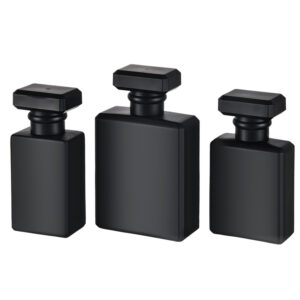
News & Blog
Great things in business are never done by one person. They’re done by a team of people. We have that dynamic group of peoples
This comprehensive guide provides a step-by-step guide to navigating the intricacies of importing cosmetics from China to the United States (US). Whether you’re a seasoned entrepreneur or new to the cosmetics business, this article will equip you with the essential knowledge to successfully import cosmetic and beauty products from China. From understanding FDA regulations and labeling requirements to working with a customs broker and calculating import duty, this guide is your roadmap to successfully bringing a wide range of beauty products from China to the US market.
China has established itself as a global manufacturing hub, and the cosmetics industry is no exception. Importing cosmetics from China offers several potential advantages for businesses:
However, importing cosmetics from China also presents challenges, including navigating complex regulations, ensuring product quality and safety, and managing logistics. This guide will address these challenges and provide practical solutions. Many businesses are looking to import cosmetics to the US.
Yes, the U.S. Food and Drug Administration (FDA) regulates cosmetics sold in the United States. While cosmetics do not require FDA approval before they go on the market, they must comply with the Federal Food, Drug, and Cosmetic Act (FD&C Act) and the Fair Packaging and Labeling Act (FPLA). The FDA also regulates the color additives used in cosmetics. There are specific rules for cosmetic products and ingredients.
The FD&C Act prohibits the marketing of adulterated or misbranded cosmetics. This means that cosmetics must be safe for their intended use, properly labeled, and free from harmful contaminants. The cosmetic act of 1938 prohibits selling such products. Cosmetics must also be made in a safe environment. The FPLA requires that cosmetics labels display certain information, such as the product’s identity, net quantity of contents, and the name and address of the manufacturer or distributor. The FDA regularly inspects cosmetic manufacturers and can take action against companies that violate these regulations.
Cosmetic labeling is a critical aspect of complying with FDA regulations. Labeling requirements are in place to ensure that consumers have access to accurate and essential information about the cosmetic products they purchase. Cosmetics and beauty products need to be labeled correctly.
Imported cosmetics must have labels that include:
All required information must be in English and prominently displayed on the label. It is also good to familiarize yourself with the rules for packaging and labeling in the US.
While cosmetics do not require pre-market FDA approval, certain ingredients, specifically color additives, do. All color additives used in cosmetics must be approved by the FDA and listed in the Code of Federal Regulations. There is a specific list of color additives allowed in cosmetics. Cosmetics that contain prohibited ingredients will not be allowed into the country.
If you are importing cosmetics from China that contain color additives, you must ensure that those additives are approved for use in cosmetics in the United States. Using unapproved color additives can lead to your products being detained or refused entry at the port. It is one of the most important things to consider when you import cosmetics from China.
Importing cosmetics from China involves a series of steps that require careful planning and execution. Here’s a step-by-step guide to help you navigate the import process:
This is a good guide on how to import your cosmetics.
Working with a customs broker is highly recommended when importing cosmetics from China. A customs broker is a licensed professional who specializes in navigating the complexities of international trade regulations and customs procedures. They can assist you with:
A customs broker can save you time, reduce the risk of errors, and help ensure a smooth and efficient import process. They will help you import the products.
The import duty on cosmetics from China varies depending on the specific product and its classification under the Harmonized Tariff Schedule (HTS). The HTS is a complex system of codes used to classify goods for customs purposes. It is a good idea to check the import duty on your shipment before importing.
To calculate the import duty, you’ll need to:
You can use online duty calculators or consult with CBP to calculate the import duty. Keep in mind that other fees and taxes may apply in addition to the import duty.
| Task | Description | Resources/Tools |
|---|---|---|
| Product Research | Identify cosmetic products to import based on market demand, trends, and your brand niche. Consider skincare, hair care, makeup, and other beauty products from China. | Market research reports, industry publications, competitor analysis, online marketplaces (e.g., Alibaba), China International Beauty Expo |
| Supplier Sourcing | Find reliable cosmetic manufacturers in China. | Online B2B platforms (e.g., Alibaba, Global Sources), industry directories, trade shows, sourcing agents. |
| Supplier Verification | Vet potential suppliers by requesting samples, verifying certifications (e.g., ISO, GMP), checking production capacity, and reading reviews. | Sample testing, factory audits (if possible), third-party verification services. |
| Sample Evaluation | Order and evaluate product samples for quality, packaging, and labeling. | Physical inspection, product testing, lab analysis (if needed). |
| Price Negotiation | Negotiate pricing, payment terms, and order quantities with your chosen supplier. | Communication with supplier, understanding Incoterms (International Commercial Terms). |
| Purchase Agreement | Formalize the agreement with your supplier, including product specifications, quantity, price, payment terms, shipping terms, and quality control procedures. | Legal counsel (if needed). |
| Documentation | Prepare necessary documents for import, including commercial invoice, packing list, bill of lading, and any required certificates (e.g., Certificate of Free Sale, Certificate of Analysis). | Communication with supplier and freight forwarder. |
| Shipping Arrangement | Arrange for shipping from China to the US, choosing between air freight (faster, more expensive) or sea freight (slower, more cost-effective). | Freight forwarder, shipping lines, airlines. |
| Customs Broker Selection | Choose a licensed customs broker to assist with customs clearance. | Research and compare customs brokers, considering experience, reputation, and fees. |
| Customs Compliance | Ensure your cosmetic products and labeling comply with FDA regulations (FD&C Act, FPLA) and CBP requirements. | FDA website, CBP website, consultation with customs broker and/or regulatory consultant. |
| Duty and Tax Payment | Pay the applicable import duty, taxes, and fees. Import duty on cosmetics will vary. | Customs broker can assist with calculation and payment. |
| FDA Compliance | Ensure your imported cosmetics meet FDA standards for safety, labeling, and color additives. | FDA website, regulatory consultants, laboratory testing. |
| Shipment Tracking | Monitor the shipment’s progress from origin to destination. | Freight forwarder’s tracking system, communication with supplier and freight forwarder. |
| Receipt and Inspection | Upon arrival, inspect the goods for damage, quality, and conformity to your order specifications. | Physical inspection, comparison with samples and order documents. |
The FDA has specific packaging and labeling requirements for cosmetics, which are designed to protect consumers and provide them with accurate information about the products they are buying. Imported cosmetics must comply with these requirements, just like domestically produced products. This is a very important part of importing from China.
Key labeling requirements include:
Packaging requirements may include using tamper-evident seals, child-resistant closures (if necessary), and ensuring that the packaging adequately protects the product from damage during shipping and handling. These are the packaging requirements that you need to follow.
Here are the 10 key takeaways for successfully importing cosmetics from China:
By understanding and following these guidelines, businesses can successfully import cosmetics from China, bringing high-quality and cost-effective beauty products to the US market while ensuring compliance with all relevant regulations. This is a complete guide for anyone who wants to import cosmetics from China.
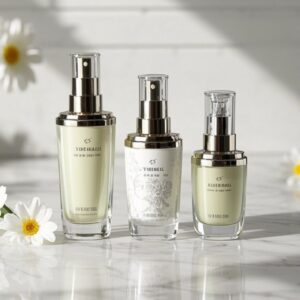
Discover 10 expert tips to choose the best cosmetic bottles, ensuring quality, durability, and sustainability while enhancing your beauty routine effortlessly.
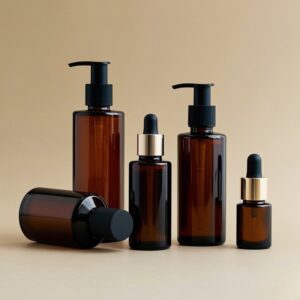
Glass bottles are the best for hair oil storage due to their non-reactivity, UV protection, and ability to preserve quality, ensuring longer shelf life and better efficacy.
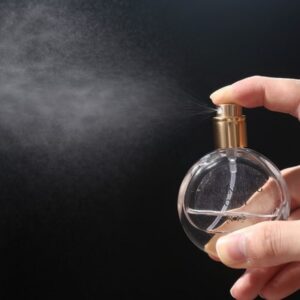
Explore the essential role of spray pumps in cosmetics, covering molding, surface treatment, components, and atomization. Learn how spray pumps enhance product performance and user experience in perfumes, gels, and more.

Explore the best bottles for storing essential oils. Learn about glass vs. plastic, color options, and tips for preserving oil potency.
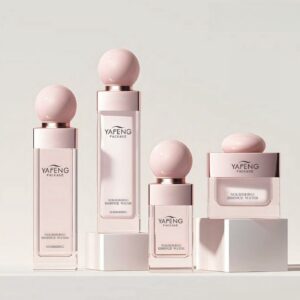
Discover the spray coating process for cosmetic glass packaging, including techniques, benefits, and tips to enhance product appeal and brand value.

Discover how gradient color spray transforms cosmetic glass bottles, enhances brand image, and boosts product appeal with expert insights from Yafeng Packaging.

Discover how rattan aromatherapy works and why glass bottles are the best choice for long-lasting scent, safety, and sustainable, elegant packaging.
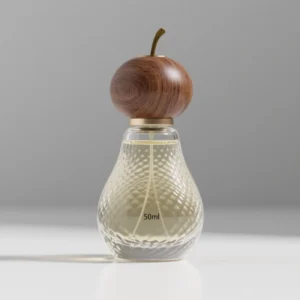
Discover the top 10 woods for perfume caps, comparing texture, pros, cons, and price to help you choose the best material for stylish, high-quality packaging.
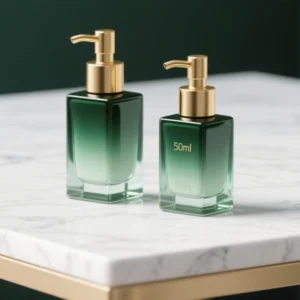
Explore cosmetic glass bottles—safety, eco benefits, types, coloring, mold costs, MOQ, and production tips—in one expert, data-rich guide.
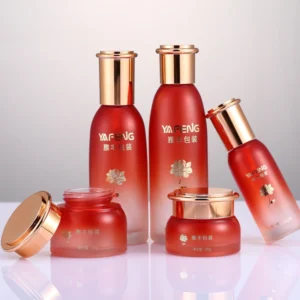
Discover how to ensure high-quality silk screen printing on cosmetic and glass bottles with expert testing methods, defect analysis, and reliability standards.

Discover a complete guide to glass dropper bottles—from material and shape to customization and usage—for precise, durable, and high-end liquid packaging solutions.
WhatsApp us